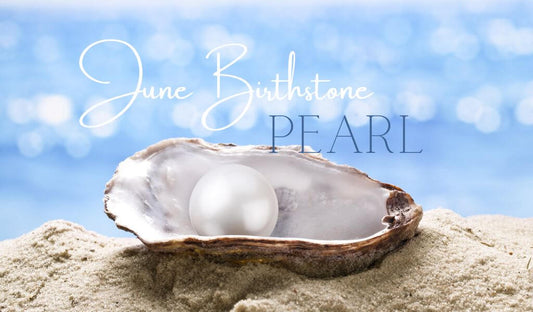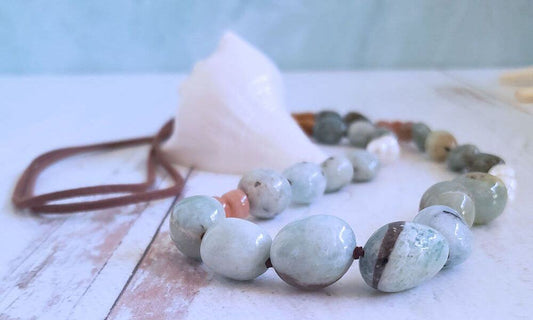Welcome to my new Gemstones & Birthstones Deep Dive series!
Throughout this series, I will take you on a deep dive into the history, lore, and properties of individual gemstones as well as where they can be found around the world.
We are going to start with the January Birthstone; Garnet - Facts - History - Properties and Lore. Hope you enjoy the journey and comment below if you have questions.

January Birthstone - Garnet
Properties of Garnet
Garnets balance our energies while also lighting the internal fires that help us bring our creative powers into focus. They help us gather our willpower and strengthen both our business and personal relationships. Since ancient times Garnets have been associated with the heart as well as the flow of blood and they are specifically linked to the feminine lifeforce.
Garnet is considered to be a "guiding light" and as such is a helpful stone for travelers to carry along on their journeys. It also purportedly ensures the safe return of loved ones and can thus be exchanged among parting friends as a symbol that they will meet again.
Garnets are a stone of cooperation, passion, and love. They cleanse the Chakras and can transform negative energy into positive. Red Garnet specifically aids with security, loyalty, and passion, while green Garnets strengthen the Heart Chakra, promoting unconditional love and prosperity. Garnets are also linked to the Sacral and Root Chakras, as they stimulate sex drive and Kundalini energies, as well as possessing grounding qualities.
Garnets are tied to the sign of Aquarius.

Garnets through History
Garnets and Antiquity
Garnets have been in use since the Bronze Age, and it is one of the oldest stones known to man. In antiquity, a common name for Garnet that could also encompass other fiery red stones - such as Spinel or Rubies - was Carbuncle, which in Latin means hot ember. The term Carbuncle is today mostly used when referring to antique jewelry.The term Garnet originates with the Phoenicians where the word for Pomegranate was "Punica geranatum". In Latin, this becomes the word granatus which means seeds or grains. Garnets often form in clusters of seeds and granular like formations. Their deep red color makes the connection to the vibrant Pommegrante quite obvious.
Garnets appear in Egyptian jewelry, notably in rings, necklaces, and pectoral pieces worn by the Pharaos and other Egyptian Royalty. They would be buried with all their jewelry and riches and thus we can today find and admire many of these pieces in Egyptology museums around the world.
Garnets were very popular in ancient Rome and were widely used in trading. Roman jewelers would adorn signet rings - used to seal and sign important documents in wax - with Garnets. The stones were also used in toga brooches, bracelets, and earrings. Romans equated the fiery red color of garnet with burning embers of coal and assigned it as the stone belonging to their god of war, Mars.
In Greek Mythology, Garnets are tied to the legend of Persephone in the Underworld, where Persephone eats Pomegranate seeds given to her by Hades. Hades wanted to ensure Persephone would return to him after Hermes is sent by Zeus to liberate her from his realm. After eating the Pomegranate seeds Persephone is bound to return to Hades and the Underworld for several months every year. Garnets in this instance are thought to symbolize the return of loved ones and represent a deep otherworldly love.

Garnets as Protective Talismans, Weaponry, and Artifacts
Garnets were used as protective talismans by many different cultures throughout the ages. They have been found in Bronze Ages tombs and excavations.
The stone shows up on Noah's Ark as the guiding light of the ship - offering safe passage when all was dark in the storm. It is said to have shone brightly in the night. This is why today it is considered to be a helpful stone for travelers.
King Solomon is said to have used Garnets in battle according to Judeo Christian teachings. Anglo Saxons and Celts encrusted their jewelry and weapons with it for its protective powers, and during the Crusades, they were used on both sides of the Christian/Muslim conflict.
Native American cultures believed Garnets could protect one from injury and poisoning. Click here to read a most beautiful legend about a Native American named Garnet Eyes whose love, Running Bear, left a trail of encrusted garnets with his tears on a mountain in the New York Adirondacks. Garnet happens to be the official rock of New York state.
From the Middle ages and beyond Garnets would often adorn jewelry worn by Royalty as it was considered not only a status symbol but a protective talisman. For the Clergy, the red stones were symbols of the suffering and blood of Christ and would be incorporated in chalices and other artifacts.
Interestingly Garnets were also used to make bullets by Kashmiri warriors in the 1800s during battles against the British. They believed these Garnet bullets would create more severe and bloodier wounds than regular ammunition.

Garnet Colors and Varieties
Most of you probably visualize Garnet as a deep red stone. This makes sense since its name is derived from the Pomegranate fruit, (Granatus in Latin), and red is the most common color used in Garnet jewelry. You may be surprised to hear that Garnets also come in rich green, violet, amber, and brown tones, as well as a rare blue hue that was discovered as recently as the 1990s. Garnets can be found all across our planet, and the different varieties are identified by the following names:
- Pyrope - Purplish or deep red to nearly black
- Almandine - Deep red to dark brownish red to almost black
- Uvarovite - Deep green
- Spessartine - Blue to blue-green to reddish-purple (color changing)
- Hessonite - Yellow, orange-brown
- Demantoid - Olive green to Emerald green
- Mali - Yellow, green
- Malaya - Orange-red
- Rhodolite – Pink - Purple
- Tsavorite - Medium to dark green
Continue reading to learn where these different varieties of Garnets come from...

Garnet Origins
Where are Garnets found?
Garnets are found the world over and as such, they appear in many ancient cultures. The oldest mine on record is about 2500 years old and was located in Sri Lanka.
Garnets form in many kinds of rocks, and can even be found in grains of sand!
They are mainly found in Metaphoric Rocks - transformed from other rocks due to pressure and temperature changes - but can occur also in Igneous Rocks - solidified and crystallized hot molten rock - and Sedimentary Rocks - weathered due to exposure to the elements - hence the occurence in sand.
Red Garnets
Large deposits of Garnets were discovered in Bohemia (Czech Republic) in the 1500s, This helped establish the area as an important jewelry manufacturing hub for three centuries and exploded the use of Garnets all across Europe. The Bohemian Garnet is a type of Pyrope and when mined in South Africa it is referred to as Cape Ruby. This type of Garnet was also mined in the Middle East.
New York state has the Garnet as its official state rock and the largest Almandine Garnet mine in the world can be found here at Barton Mine in the Adirondacks. Garnets can be found in many other US states as well. US Garnets are often mined for industrial use.
And now we get to my favorite; Rhodolite - a red "hybrid" Garnet variety that combines Pyrope and Almandine to create vibrant raspeberry, pink hues that can be reminiscent of Rubies.
Green Garnets
The Demantoid variety of green Garnets was first mined in the Ural mountains of Russia, and was a favorite of that famous egg guy, Carl Faberge ;). Later more deposits were discovered in Namibia. Africa is also home of a second variety of green Garnet, the Tsavorite, named after a National park in Tanzania. Tsavorite also occurs in neighboring Kenya.
Lastly, the grossular type of green Garnet comes in hues of earthy greens, browns and yellows and it commonly mined in Mali. Mali Garnets are anohter "hybrid" stone, combining Grossular and Andradite varieties.
Some other countries known for their garnets are Canada, Sri Lanka, Madagascar, Kenya, and Iceland.

Garnets in Modern Day Jewelry
Although the interest in Garnet waned a bit after the 1800s after it was used widely during the Victorian Era, it is now experiencing a renaissance in jewelry manufacturing as more colors and varieties continue to be found.
Today, Garnets can be found in fine jewelry designs as well as more bohemian styles crafted in Sterling Silver or Vermeil. They are especially prominent in Museum reproductions of antique jewelry. Garnets are a popular stone for engagement rings and are the stone for the 2nd anniversary of marriage.
The variety of colors and price ranges that Garnets come in make it a wonderful choice for designers of all styles of jewelry to come up with new and creative designs.
When I personally work with Garnets here at Summer Indigo I most often choose the earthy green hues which I have used in necklaces. I will also at times use the deep reds, which I think pair beautifully with ivory freshwater Pearls. It is not a stone I have worked with a lot but this can change at any time as I am continually evolving in my choice of materials. :)
Hope you enjoyed reading about Garnets as much as I loved putting this post together!
Shoot me a line or two if you have any questions and remember that you can always request a custom made piece of Jewelry in any stone of your choice.
Coming up next month:
February Birthstone - Amethyst

Sources
I created a web page with all my research sources for you, check it out if you want to learn even more Garnet Facts.




